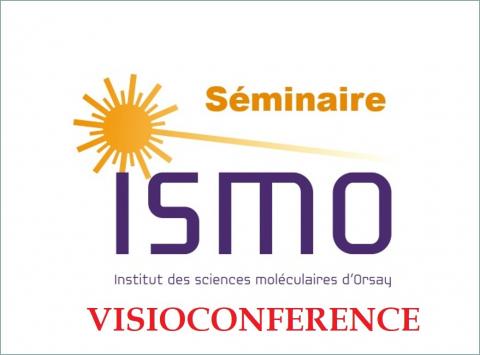
Séminaire de Benoit Rogez en VISIOCONFERENCE
Temperature measurements at the nanoscale using quantitative phase imaging and Three-dimensional super-resolved imaging using Random Illumination Microscopy (3D-RIM)
par Benoit Rogez
Institut de la Vision, Paris
This talk will be split in two parts :
In the first part, I will focus on temperature measurement at the nanoscale. Because of their size, standard temperature sensors (thermometers, thermocouples) only provide an average temperature over a millimetric area. To reach micrometric resolution, Institut Fresnel developed an optical technique based on quantitative phase imaging (QPI). Being sensitive to the optical refractive index of the medium, QPI is able to detect the small decrease of refractive index induced by heating, and enables the 3D-mapping of the temperature field in aqueous solution with a sensitivity below 1°C and a diffraction limited resolution. In this talk, I will explain the principle of temperature measurement based on QPI, and discuss the phenomenon of thermophoresis, or the spontaneous diffusion of particles along a temperature gradient. I will present some results we obtained on nanometer-sized fluorescent nanoparticles, and some implications on plasmonic assisted optical trapping.
In the second part of the talk, I will present the RIM (Random Illumination Microscopy) technique, a new super-resolution microscopy which enables 3D-superresolution imaging in thick living tissues. Similarly to the Structured Illumination Microscopy (SIM) techniques, RIM relies on the use of a low intensity structured illumination pattern, followed by a computational reconstruction to achieve a resolution about twice better than the diffraction limit. But contrary to SIM, RIM is robust to optical aberrations from the sample, and can achieve super-resolution imaging even through tens of micrometers thick samples. After presenting the experimental requirements to perform 3D-RIM imaging, I will show the first results we obtained on fluorescent nanospheres, effectively showing a 2 times improvement of the resolution in the 3 directions.
OrsayTemperature measurements at the nanoscale using quantitative phase imaging and Three-dimensional super-resolved imaging using Random Illumination Microscopy (3D-RIM)
par Benoit Rogez
Institut de la Vision, Paris
This talk will be split in two parts :
In the first part, I will focus on temperature measurement at the nanoscale. Because of their size, standard temperature sensors (thermometers, thermocouples) only provide an average temperature over a millimetric area. To reach micrometric resolution, Institut Fresnel developed an optical technique based on quantitative phase imaging (QPI). Being sensitive to the optical refractive index of the medium, QPI is able to detect the small decrease of refractive index induced by heating, and enables the 3D-mapping of the temperature field in aqueous solution with a sensitivity below 1°C and a diffraction limited resolution. In this talk, I will explain the principle of temperature measurement based on QPI, and discuss the phenomenon of thermophoresis, or the spontaneous diffusion of particles along a temperature gradient. I will present some results we obtained on nanometer-sized fluorescent nanoparticles, and some implications on plasmonic assisted optical trapping.
In the second part of the talk, I will present the RIM (Random Illumination Microscopy) technique, a new super-resolution microscopy which enables 3D-superresolution imaging in thick living tissues. Similarly to the Structured Illumination Microscopy (SIM) techniques, RIM relies on the use of a low intensity structured illumination pattern, followed by a computational reconstruction to achieve a resolution about twice better than the diffraction limit. But contrary to SIM, RIM is robust to optical aberrations from the sample, and can achieve super-resolution imaging even through tens of micrometers thick samples. After presenting the experimental requirements to perform 3D-RIM imaging, I will show the first results we obtained on fluorescent nanospheres, effectively showing a 2 times improvement of the resolution in the 3 directions.
